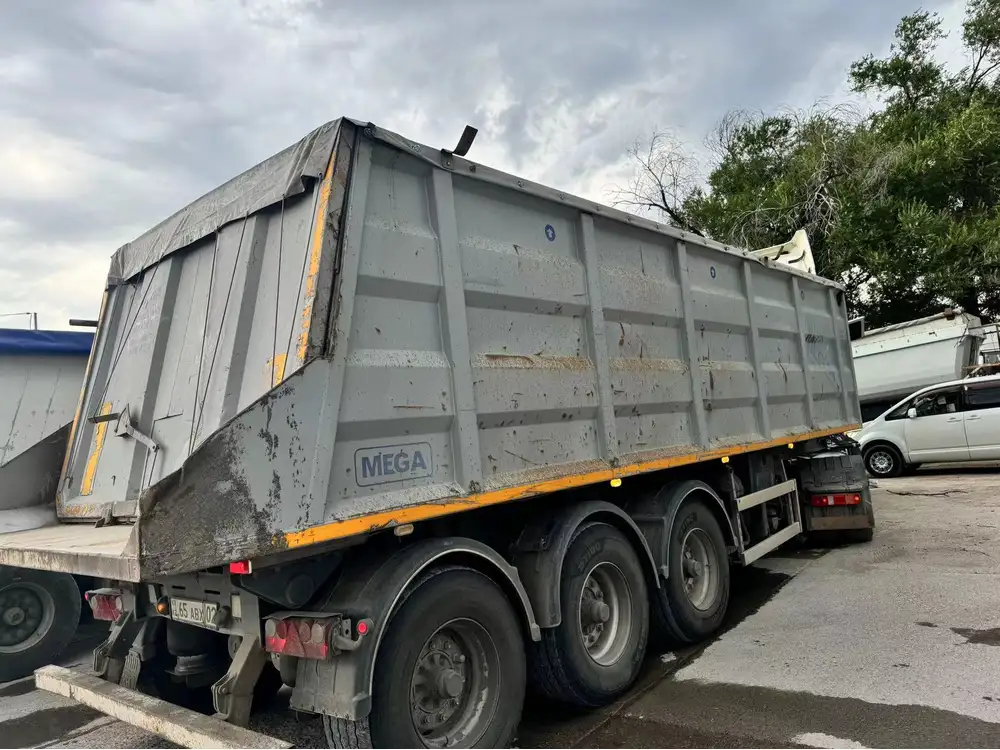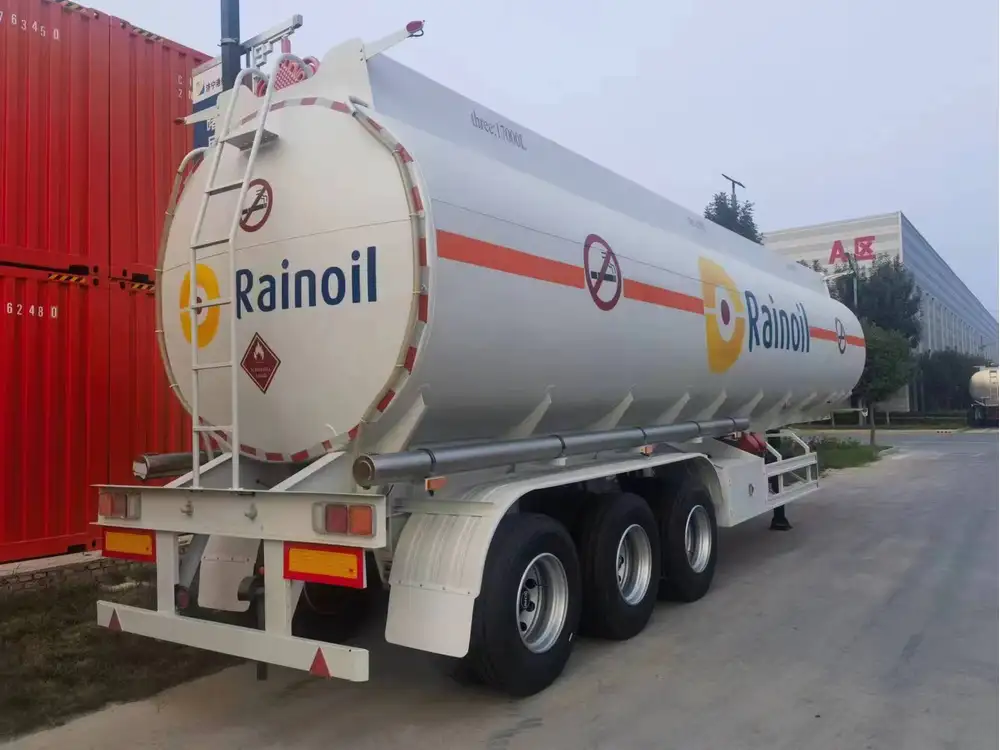End dump trailers represent a critical component in the transportation and construction industries, enabling efficient dumping of materials. Understanding how to efficiently and safely operate these trailers is essential for maximizing productivity and minimizing risks.
What is an End Dump Trailer?
An end dump trailer is designed to transport loose materials such as gravel, sand, and aggregates. It features a hydraulic lift system that tilts the trailer bed to release its load from the rear. The design allows for effective unloading on various terrains, making it a popular choice for construction sites, mining operations, and other industrial applications.
Advantages of Using End Dump Trailers
| Advantages | Details |
|---|---|
| Efficient unloading | Rear-dumping capability speeds up unloading while minimizing ground damage. |
| Versatile applications | Suitable for various materials including aggregates, asphalt, and grain. |
| Stability | Low center of gravity enhances stability during transport and unloading. |
| Large capacity | Ability to haul significant loads, maximizing operational efficiency. |

Key Components of an End Dump Trailer
To effectively dump an end dump trailer, it’s vital to understand its primary components.
1. Trailer Bed
The bed of an end dump trailer is engineered to hold materials; it typically is made from durable materials like alloy steel to withstand the weight and abrasion of bulk loads.
2. Hydraulic System
The heart of the end dump trailer’s operation is its hydraulic lift system.
- Hydraulic Cylinders: These are the main components enabling tilting of the trailer bed to dump the load.
- Hydraulic Pump: Operates the flow of fluid to the hydraulic cylinders, controlling the dumping action.

3. Frame and Axles
The structure of the trailer consists of a robust frame and multiple axles designed to support heavy loads.
4. Tarp System
A tarp system is essential for securing loads during transport and protecting them from weather elements, ensuring compliance with regulations.
Step-by-Step Procedure on How to Dump an End Dump Trailer
Operating an end dump trailer requires careful attention to safety and procedure. Below, we detail each step in the dumping process.

Step 1: Preparation Before Dumping
Before initiating the dumping procedure, ensure:
- Location Assessment: Choose a flat, stable surface to prevent tipping during the dumping process.
- Surrounding Area: Check that the area is clear of obstructions and personnel.
- Material Type: Identify the material and ensure it is suitable for dumping without causing damage during the process.
Step 2: Positioning the End Dump Trailer
- Align the Trailer: Reverse the truck to position the trailer’s rear in line with the designated dumping area.
- Set Parking Brake: Engage the parking brake to prevent the trailer from rolling during the lifting process.
Step 3: Engage the Hydraulic Lift
- Start the Truck’s Engine: Ensure the vehicle is running before activating the hydraulic system.
- Activation: Use the control lever to engage the hydraulic lift.
- Raising the Bed: Gradually raise the trailer bed until it reaches the desired angle for dumping.
Note: Observe the fluid levels in the hydraulic system and ensure there are no leaks.

Step 4: Execute the Dump
- Final Checks: Confirm that the environment is clear, and no personnel are in the vicinity of the trailer’s rear.
- Release the Load: Depending on the type of material, control the tilt angle to ensure an even discharge.
- Monitor Unloading: Keep a close eye on the unloading process, adjusting the tilt of the bed as necessary to prevent blockages.
Step 5: Lower the Trailer Bed
Once the load has been successfully dumped, lower the trailer bed slowly back into the horizontal position.
- Disengagement: Use the control lever to lower the bed completely.
- Safety First: Only disengage the hydraulic system once the bed is fully lowered.
Step 6: Final Inspection and Exit
- Inspect Load Area: After dumping, check the site for any leftover material that may need additional clean-up.
- Exit Procedure: Carefully reverse the truck from the dumping area and head to the next loading point.

Safety Tips When Dumping an End Dump Trailer
Safety is paramount in operating heavy machinery. Adhere to the following protocols to ensure safe operation:
- Wear Protective Gear: Always wear a hard hat, high-visibility vest, gloves, and safety boots.
- Use Spotters: If visibility is limited, have a spotter present to assist in positioning and monitoring during the dumping process.
- Regular Maintenance: Conduct routine inspections of the hydraulic system, tires, and trailer structure, ensuring everything functions optimally.
Common Challenges and Solutions
Challenge 1: Uneven Ground Conditions
Solution: Always assess the ground stability before dumping. If the area is uneven, consider using equipment like leveling pads or mats to stabilize the trailer.

Challenge 2: Material Blockage During Dumping
- Prevention: Know the characteristics of the material being transported. Aggregates like crushed stone may compact more and require a steeper angle to discharge.
- Solution: If a blockage occurs, slightly raise and lower the trailer bed until the material begins to flow.
Challenge 3: Hydraulic System Malfunctions
Issues can arise within the hydraulic system affecting performance.
- Prevention: Conduct pre-dump functionality checks monthly or before use to ensure the hydraulic system operates smoothly.
- Solution: In the event of a failure, cease operations and seek immediate mechanical support from a qualified technician.
Storage and Maintenance of End Dump Trailers
Proper maintenance and storage enhance the life span of end dump trailers.

Routine Maintenance Schedule
| Task | Frequency | Details |
|---|---|---|
| Hydraulic Fluid Check | Monthly | Ensure fluid levels are adequate and filter is clean. |
| Tire Inspection | Bi-Weekly | Check for wear and proper air pressure. |
| Brake Systems Check | Monthly | Ensure brakes are functional and do not exhibit wear or damage. |
| Frame Inspection | Monthly | Look for any signs of rust or structural issues. |
Proper Storage Techniques
- Dry Conditions: Store trailers in a dry location to prevent rust.
- Covering: Use tarps to shield the trailer from environmental elements when not in use.
Conclusion
Understanding the mechanics of an end dump trailer and adhering to safety protocols are essential for efficient operation. By following this guide, operators can confidently maneuver and dump materials, increasing productivity while ensuring safety on the job site. With respectful attention to maintenance and troubleshooting common challenges, the operational lifespan of end dump trailers can be significantly extended, ensuring a sound investment for any transportation or construction company.



